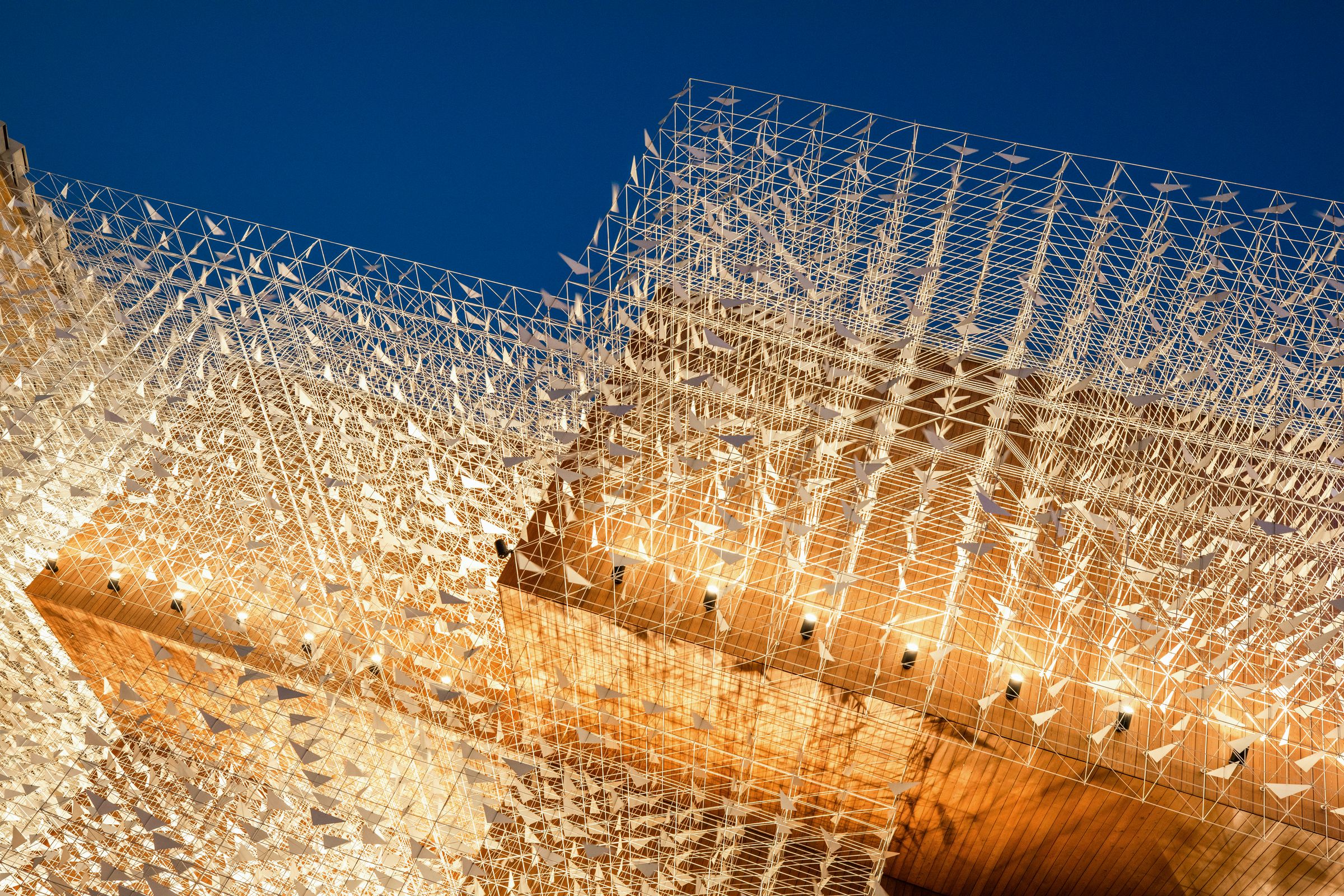EXPO 2020 in Dubai was opened on 1 October. The theme of the event delayed by the pandemic is encompassed in the slogan “Connecting Minds, Creating the Future”. The Poland Pavilion was designed by a Warsaw-based WXCA design studio and Bellprat Partner from Switzerland.

World EXPO is the largest event of this kind in the world. It was organised for the first time in 1851 in London, and currently it gathers the representations of 192 countries around the globe. This year, Expo will take place for the first time in a country from the so-called MEASA (Middle East Africa and South Asia) region. Despite the fact that the event was postponed to 2021, the name EXPO 2020 remained.
The event is meant to focus mostly on spreading awareness of climate change, environmental challenges and circular economy. The themes of this year’s Expo are Opportunity, Mobility and Sustainability.
The principal statement of the Poland Pavilion, which is located in the Mobility zone, is “Poland. Creativity inspired by nature”. The building designed by WXCA and Bellprat Partner is characterised by a dynamic structure with a slender modular outline. It creates an open space covered with a large roof, mostly finished with wood. Thanks to the use of this material, the Polish building stands out from the pavilions of other countries, dominated by steel and glass.

At first glance, the viewer’s attention is drawn to the kinetic sculpture surrounding the pavilion, depicting migrating birds which are a metaphor of mobility. The structure propelled by wind catches not only the eye but also the ear of the visitors. All the elements which the pavilion was constructed with and the accompanying sensuous experience encourage the viewers to reflect on the relation between man and nature.
“Our concept of the Poland Pavilion consciously fits into the leading slogan of the future exposition. Appealing to the symbolism of migrating birds, we want to show the dynamics of development of the contemporary world, cultural and commercial exchange, and social migrations,” said Marta Sękulska-Wrońska, co-author of the project, partner in WXCA.
WXCA and Bellprat Partner have been working simultaneously on the building design and of the exhibition, which allowed them to create a coherent, immersive space and turned the pavilion itself into an element of the exposition. A journey through its space is a story about Poland, the successive stages of which form a coherent narrativr, encouraging to be inspired by nature. “In fact, we did not design the building. We created a strongly multi-layered phenomenon and experience,” said Michał Czerwiński from WXCA.
Apart from the exhibition and conference space, the Polish Pavilion also includes a catering zone where visitors can taste the Polish cuisine, and a playground for children.

During the six months of EXPO 2020, the Polish Pavilion will host almost one thousand events promoting Polish culture and economy. The highlight of the programme will be Poland Day which is to be organised on 7 November 2021. During that event, more than 2,500 Polish companies and organisations will present themselves in different ways, both physically and remotely. The coordination of the Poland Pavilion during EXPO was entrusted to the Polish Investment & Trade Agency. It is estimated that around 25 million people will visit the EXPO until 31 March 2022.




